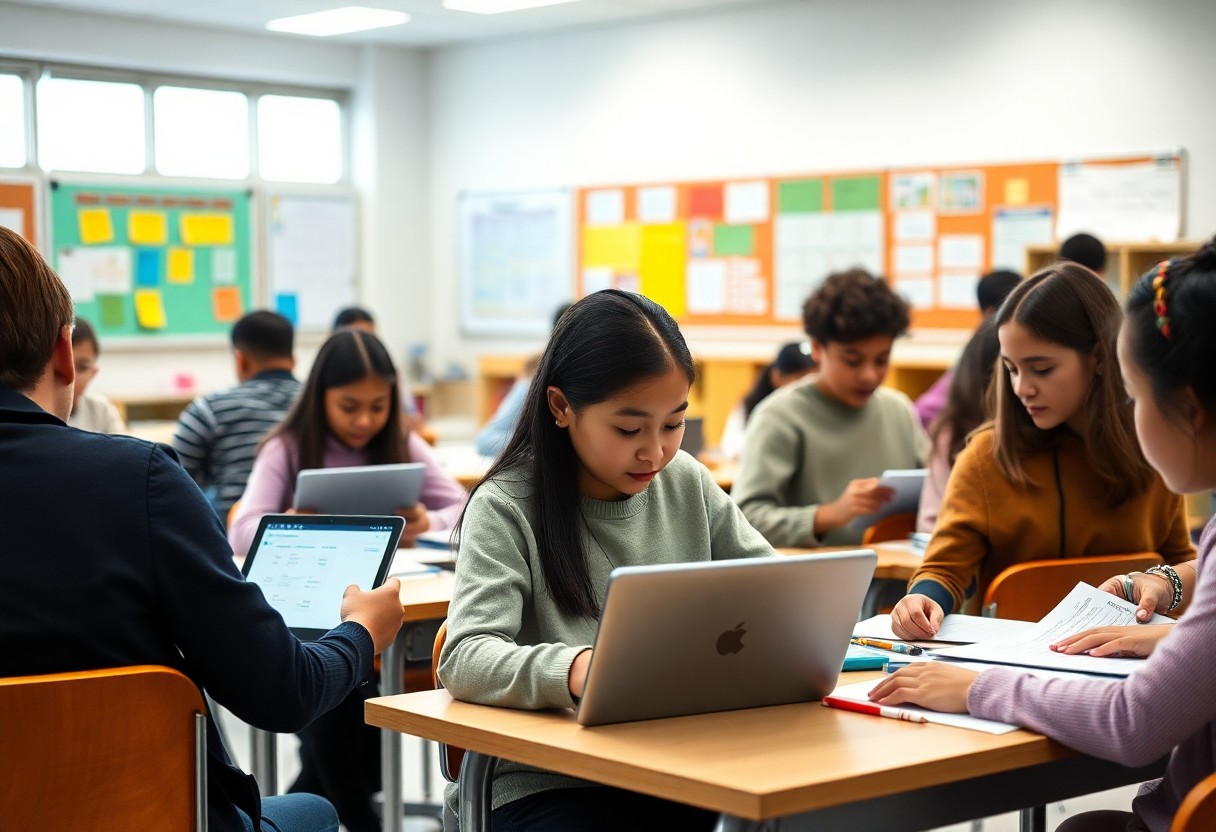Many students and educators seek effective ways to assess learning strengths and weaknesses to create personalized learning experiences. By utilizing specific tools and techniques, you can gain insights into how you learn best and identify areas for improvement. This guide will provide you with various resources and methods to evaluate your learning profile, helping you make informed decisions about your educational journey. Understanding your unique learning style is imperative for fostering growth and achieving academic success.

Understanding Learning Strengths
As you explore the landscape of learning, understanding your strengths plays a vital role in enhancing your educational journey. Identifying areas in which you excel allows you to leverage these skills for more effective learning experiences. You may find that recognizing your unique strengths empowers you to approach challenges with greater confidence, ultimately leading to improved academic performance and personal development.
Cognitive Assessments
Among the various tools available, cognitive assessments stand out as valuable resources for pinpointing your learning capabilities. These assessments evaluate important cognitive skills such as memory, attention, and problem-solving. By analyzing your performance in these areas, you can develop a clearer picture of your strengths and adapt your study strategies accordingly, maximizing your educational potential.
Behavioral Observations
Along with cognitive assessments, behavioral observations provide insights into your learning process through real-time analysis. This method allows you to observe how you interact with tasks, manage challenges, and engage with peers. Such observations can reveal patterns in your behavior that highlight your strengths and weaknesses, guiding you toward more effective learning strategies.
Indeed, behavioral observations offer a unique perspective on your learning strengths by capturing your natural reactions and interactions in various situations. By examining how you approach tasks, respond to feedback, and collaborate with others, you can gain a deeper understanding of your learning style. These insights not only inform your study habits but also help you adapt to different learning environments, ultimately fostering personal growth and academic success.
Identifying Learning Weaknesses
Some learners may face challenges in certain areas, making it imperative to identify learning weaknesses early on. Understanding where your struggles lie allows you to tailor your learning approach, seek appropriate resources, and ultimately improve your performance. Without this awareness, you risk continuing ineffective study habits that can hinder your overall academic success.
Diagnostic Tests
One effective way to pinpoint your learning weaknesses is by utilizing diagnostic tests. These assessments are designed to evaluate your knowledge and skills in specific subjects, providing you with a clear picture of areas that require improvement. By analyzing the results, you can focus your efforts on targeted learning strategies that will enhance your understanding and performance.
Self-Assessment Tools
By engaging with self-assessment tools, you can gain valuable insights into your learning styles and preferences. These tools often include questionnaires or surveys that prompt you to reflect on your learning habits, strengths, and weaknesses, allowing you to discover patterns that affect your education journey.
Further exploring self-assessment tools can empower you to take control of your learning process. Many of these tools are easily accessible online, providing you with a convenient means to evaluate your skills regularly. They often feature questions about your study habits, attitudes towards subjects, and perceived challenges. The insights gained from these self-reflections can guide you in making informed decisions about your study materials, seeking help where needed, and ultimately fostering a more effective learning environment tailored to your unique needs.
Tools for Educators
Even as an educator, identifying your students’ learning strengths and weaknesses is vital for tailoring your teaching methods. Utilizing various tools can enhance your understanding of how students absorb information, ultimately leading to a more engaging learning environment. Combining assessment strategies allows you to address diverse learning needs and foster an inclusive educational atmosphere.
Learning Style Inventories
An effective way to assess learning preferences is through learning style inventories. These assessments help you pinpoint how your students learn best, whether they are visual, auditory, or kinesthetic learners. By understanding their unique styles, you can adapt your teaching approach to better accommodate their needs and improve overall engagement.
Formative Assessment Strategies
By implementing formative assessment strategies, you can gain valuable insights into your students’ progress and areas for improvement. These methods allow you to evaluate understanding during the learning process, rather than at its conclusion, making adjustments to your teaching methods as needed.
At various stages of instruction, formative assessment strategies such as quizzes, polls, and reflective journals can help you assess your students’ grasp of the material. Regular feedback enables you to identify trends in understanding and confusion, allowing you to intervene and provide additional support to your students as necessary. This ongoing dialogue not only enhances academic growth but also fosters a supportive classroom environment that encourages continual learning.
Parental Involvement in Evaluation
To effectively evaluate your child’s learning strengths and weaknesses, your involvement as a parent is imperative. Your unique insights into their behaviors and preferences can provide invaluable context to assessment results. By engaging in open communication with educators and utilizing various evaluation tools, you can create a comprehensive understanding of your child’s learning journey.
Home Observation Techniques
Between casual conversations and daily activities, you have the opportunity to observe your child’s natural learning styles. Take note of their interests, ways of engaging with new concepts, and how they tackle challenges at home. These observations can inform both your understanding of their strengths and areas where they may require additional support.
Collaboration with Educators
For effective evaluation, collaborating with your child’s teachers is imperative. Educators can provide assessment data and insights into your child’s performance in an academic setting, helping you to identify patterns and potential areas of growth. Furthermore, regular communication allows you to share your observations and concerns, creating a holistic view of your child’s learning progress.
Understanding your child’s learning needs requires a partnership with their educators. This collaboration can help you gain access to specialized resources and recommendations tailored to your child’s unique profile. By working together, you can ensure that your child receives the appropriate support both at home and in school, fostering an environment conducive to learning and development.
Utilizing Technology in Evaluations
Unlike traditional methods of assessment, technology offers innovative tools that allow you to evaluate learning strengths and weaknesses more effectively. By integrating digital resources into your evaluation process, you can access real-time data, personalize learning experiences, and foster a more engaging environment. Technology not only streamlines the assessment process but also enhances the quality of feedback you receive, ensuring that it is timely and actionable.
Learning Management Systems
Utilizing Learning Management Systems (LMS) enables you to centralize evaluation data, track progress, and provide personalized feedback. These systems offer interactive features that allow you to assess learning outcomes and adjust your teaching strategies accordingly, ultimately enhancing your overall effectiveness as an educator.
Educational Apps and Analytics
At the forefront of educational technology, educational apps and analytics provide insight into individual learner performance. These tools can help you identify trends, monitor progress, and adjust your instructional techniques to better meet the needs of your students.
Further, educational apps often come equipped with built-in analytics that empower you to gain a deeper understanding of your students’ engagement and understanding. By analyzing data generated through these applications, you can pinpoint specific areas of improvement and tailor your instruction to address those needs. In this way, you foster a more adaptive learning environment, driving student success by making informed, data-driven decisions.
Implementing Findings into Practice
Keep your findings at the forefront of your teaching strategy by integrating them into your daily practices. Use the insights gained from evaluation tools to enhance your instruction methods and adapt your materials, ensuring a more personalized approach to learning. This will not only enrich the educational experience, but also allow you to cater to diverse learning needs effectively.
Developing Personalized Learning Plans
Between the insights gathered from your evaluations and your understanding of each learner, you can create personalized learning plans. Tailor these plans to build on students’ strengths and address their weaknesses, making the learning experience more relevant and engaging. By aligning the approach with individual needs, you empower students to take ownership of their learning journey.
Continuous Monitoring and Adjustment
Along with implementing personalized plans, maintain an ongoing process of monitoring and adjusting. Regularly assess student progress and actively seek feedback to make informed changes. This responsiveness ensures that instruction remains aligned with evolving needs, fostering a more effective learning environment.
Further elaboration on continuous monitoring and adjustment reveals its importance as a proactive approach in education. By frequently reviewing student performance and collecting feedback, you can identify trends and make timely interventions. This adaptability not only enhances student outcomes but also encourages a growth mindset. Establish a routine for check-ins and assessments, and be willing to adjust your teaching strategies based on real-time data to create a more dynamic and responsive learning atmosphere.
To wrap up
With this in mind, utilizing tools to evaluate your learning strengths and weaknesses can significantly enhance your educational journey. These tools, ranging from self-assessments to structured feedback mechanisms, empower you to identify areas for improvement and build on your existing skills. By regularly engaging in this evaluation process, you can tailor your study strategies, maximize your learning potential, and ultimately achieve your goals more effectively. Embrace these resources to foster a deeper understanding of how you learn best.
Q: What are some common tools used to evaluate learning strengths and weaknesses?
A: There are several tools that educators and individuals can use to assess learning strengths and weaknesses. Standardized tests often provide a benchmark for academic performance, while formative assessments like quizzes and observations offer insights during the learning process. Additionally, self-assessment questionnaires can help learners reflect on their own understanding and skills. Digital platforms, such as learning management systems, often have built-in analytics that track progress over time, giving a comprehensive view of performance.
Q: How can self-assessment benefit learners in identifying their strengths and weaknesses?
A: Self-assessment encourages learners to engage in reflective practice, allowing them to evaluate their understanding, skills, and areas for improvement. This process helps students develop metacognitive skills, enabling them to set personal goals and take ownership of their learning journey. By identifying their own strengths, learners can build confidence and focus on refining their weaknesses through targeted strategies. Moreover, self-assessment fosters a growth mindset, which motivates students to view challenges as opportunities for development.
Q: How can educators effectively use evaluation tools to support student learning?
A: Educators can implement various evaluation tools to create a more tailored learning experience for their students. By combining formative and summative assessments, teachers can gain a comprehensive understanding of each student’s abilities. Regular feedback sessions can also help identify specific strengths and weaknesses, providing students with actionable insights to improve. Additionally, using learning analytics from digital platforms can highlight trends and patterns, allowing educators to adapt their teaching methods and resources to better meet the needs of diverse learners in their classroom.




0 Comments